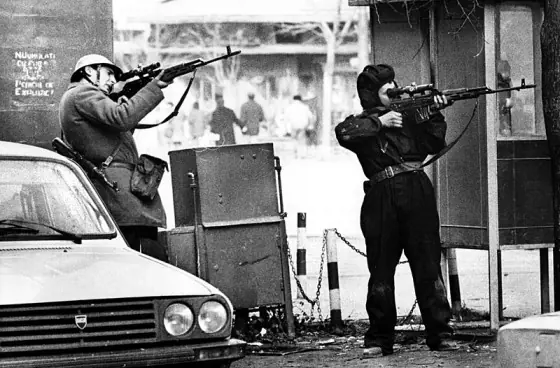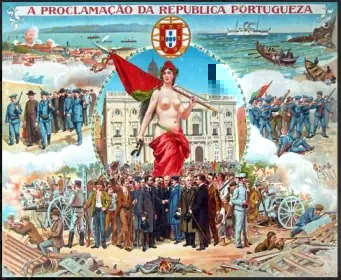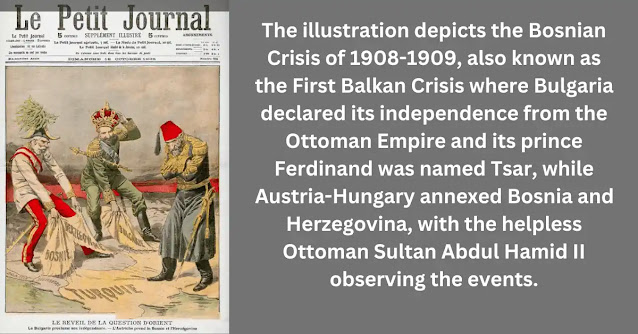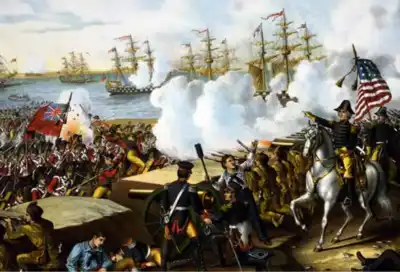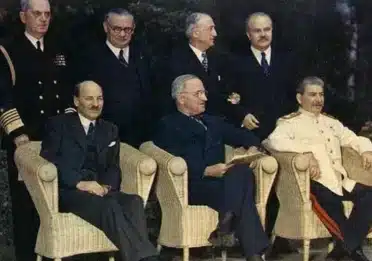Unmasking Geopolitics: Bulgaria’s Liberation Concealed within a Treaty
The Russo-Turkish War of 1877-1878 emerged as a consequential clash between the Ottoman Empire and a coalition led by the Russian Empire. Taking place in the Balkans and the Caucasus, this conflict was fueled by the surge of 19th-century nationalism. The Russian Empire’s objectives included regaining territories lost in the Crimean War, asserting control over the Black Sea, and supporting Balkan nations’ fight for independence from the Ottoman Empire, which was pivotal in achieving Bulgaria’s Liberation. Additionally, the ideals of pan-Slavic sentiment played a significant role in these efforts.
The historical backdrop between Russia and Turkey has witnessed their involvement in numerous wars. However, the Russo-Turkish War of 1877-1878 holds particular significance, especially for Bulgaria. A pivotal moment within this conflict unfolded with the capture of Plevna by the Russian Army on December 10, 1877. This article explores the intricate details of the siege, the decisive victory achieved, and its profound impact on the war’s outcome, culminating in Bulgaria’s Liberation from Ottoman rule.
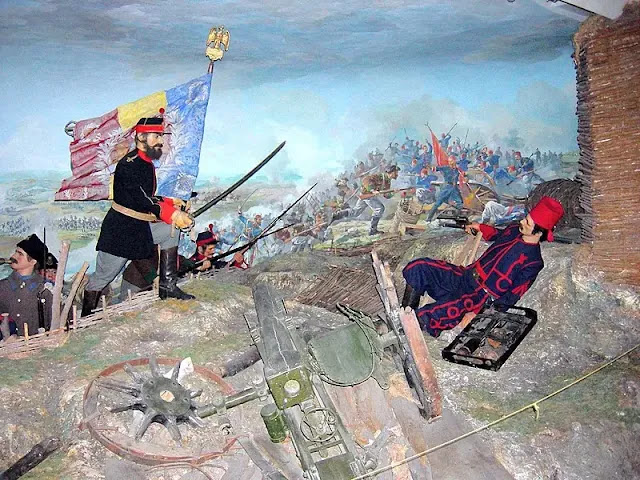 |
| Plevna Diorama |
💻 Table of Contents:
- The April Uprising: Paving the Path to Bulgarian Independence
- Ottoman Defense: Plevna’s Crucial Position in the Conflict
- Plevna’s Fall: A Pivotal Moment in Bulgaria’s Liberation
- An Iconic Moment in Bulgarian History: The Capturing of Plevna’s Legacy
- Treaties that Delayed Bulgarian Independence: Geopolitical Impact
- Plevna’s Triumph: A Turning Point in Bulgaria’s Liberation
The April Uprising: Paving the Path to Bulgarian Independence
Bulgaria, enduring nearly five centuries of Ottoman rule, faced immense political, social, and economic challenges. However, the growing desire for independence and Bulgaria’s Liberation ignited numerous uprisings and resistance movements across the region. One such pivotal event was the April Uprising, or Aprilsko vastanie, which unfolded in April 1876 as a rebellion orchestrated by Bulgarians within the Ottoman Empire. This uprising served as a catalyst, leading to the re-establishment of a sovereign Bulgaria in 1878.
The Russo-Turkish War played a crucial role in this struggle for independence, offering Bulgaria a vital opportunity to sever ties with Ottoman dominance. Within this conflict, the capture of Plevna emerged as a defining moment. Plevna held not only strategic military significance but also symbolized the aspirations of the Bulgarian people on a larger scale. Its fall marked a turning point, embodying the resilience and unwavering determination of the Bulgarians to break free from centuries-long subjugation.
With Plevna’s capture and the Russo-Turkish War as a backdrop, Bulgaria’s destiny took shape. The war played a decisive role in securing Bulgaria’s liberation from Ottoman rule and paved the way for the establishment of a sovereign state. This historical episode stands as a testament to the enduring spirit of Bulgarian national identity and the sacrifices made by its people in their unwavering pursuit of independence.
 |
| Defence of Bayazet |
Ottoman Defense: Plevna’s Crucial Position in the Conflict
Plevna, situated in what is now Bulgaria, played a pivotal role during the Russo-Turkish War due to its strategic significance. The city served as a vital supply route for the Ottoman forces, making it a prime objective for the advancing Russian Army. Under the command of the skilled Ottoman general Osman Pasha, Plevna’s formidable fortifications posed a significant challenge to the Russian forces.
In the Russo-Turkish War, the alliance between the Russian Empire and the Kingdom of Romania emerged against the Ottoman Empire. The Russian army, crossing the Danube at Svishtov, sought to bypass heavily fortified Turkish fortresses on the Black Sea coast en route to Constantinople. A formidable obstacle stood in their path: the Ottoman army, under the leadership of Osman Pasha, stationed in Pleven, a city surrounded by formidable strongholds.
Encountering difficulties in capturing Pleven, the Russian commander sought assistance from King Carol I of Romania. Assuming command upon crossing the Danube, King Carol I opted for a siege strategy, cutting off the city’s supply routes. Despite the capture of some barricades, the siege persisted from July to December 1877.
Osman Pasha’s December attempt to break the siege ended in failure, leading to his injury. Eventually surrendering to General Mihail Cerchez, the Romanian commander, Osman Pasha’s capitulation marked a pivotal turning point in the war.
Handing his sword to General Cerchez symbolized a decisive victory that played a crucial role in achieving Bulgaria’s Liberation from Ottoman rule. With the successful capture of Pleven and the subsequent victory in 1877, the way to Sofia, the capital of Bulgaria, was opened. This triumph not only paved the path to winning the war but also presented an opportunity for Russia to gain an advantage in the “Great Game” by establishing its influence in the Eastern Balkans.
 |
| Pleven Epopee |
Plevna’s Fall: A Pivotal Moment in Bulgaria’s Liberation
Amidst months of relentless conflict between Russian and Ottoman forces, the decisive battle for the capture of Plevna unfolded. The Russian Army initiated a formidable assault on the city, sparking a fierce engagement that inflicted heavy casualties on both sides.
Despite the tenacious defense mounted by the Ottoman battalion, the Russian forces demonstrated unwavering purpose and strategic acumen. Breaking through the Ottoman defenses, they seized crucial positions within Plevna, engaging in intense street battles and clashes around the city’s fortifications.
As the conflict intensified, the surviving Ottoman garrison of approximately 25,000 soldiers found themselves increasingly encircled by advancing Russian forces. The relentless pressure and loss of key positions compelled the garrison to ultimately surrender.
The capture of Plevna stood as a monumental triumph for the Russian Army, dealing a severe blow to the military capabilities of the Ottoman Empire and bolstering the morale of Russian forces. This victory at Plevna not only created new avenues for further advances but played a pivotal role in the broader success of the Russian campaign in the Russo-Turkish War.
The Battle of Plevna and the subsequent surrender of the Ottoman garrison represented a turning point in the conflict, affirming the effectiveness of Russian military strategy and highlighting the determination and resilience of their soldiers. Plevna’s fall became an enduring symbol of Russian military prowess, contributing significantly to the ultimate liberation of Bulgaria from Ottoman rule.
💻 Table of Contents:
- The Crimean War: A Battle for Global Strategic Significance & Power Rivalries
- Reshaping the Region: The Dynamic Legacy of the First Balkan War
- Anatolian Revival: The Battle of Dumlupınar and August 30 Victory Day
- From Ottoman Rule to Greek Sovereignty: The Battle of Navarino’s Legacy
An Iconic Moment in Bulgarian History: The Capturing of Plevna’s Legacy
The capture of Plevna resonates profoundly in the annals of Bulgaria’s history, embodying enduring lessons in unity, resilience, and the unwavering spirit of a people yearning for independence. This pivotal event stands as a perpetual source of inspiration for Bulgarians, instilling a deep sense of pride in their heritage and a steadfast commitment to safeguard the hard-won liberties they cherish.
Embedded in the collective consciousness of Bulgaria, the capture of Plevna remains an emblematic testament to the triumph of human determination and the pursuit of national sovereignty. Its indelible imprint on the nation’s narrative is commemorated annually, serving as a poignant reminder of the courage and resolve exhibited by the Bulgarian people during that transformative juncture in history.
Treaties that Delayed Bulgarian Independence: Geopolitical Impact
The capture of Plevna emerged as a pivotal moment in the Russo-Turkish War, significantly altering the dynamics of the conflict. This triumph not only weakened the Ottoman Empire’s stance but also uplifted the spirits of the Russian forces, creating avenues for further advancements that ultimately played a crucial role in the overall success of the Russian campaign.
This narrative delves into the Liberation of Bulgaria, a seminal historical event shaped by the resurgence and evolution of Bulgaria. Central to this exploration is the Tenth Russo-Turkish War (1877–1878), concluding with the signing of the Treaty of San Stefano, a milestone marking the conflict’s end.
The Treaty of San Stefano was a peace treaty signed between the Russian and Ottoman empires at the end of the Russo-Turkish War in 1877-1878. It was signed on March 3, 1878, in a village called San Stefano, near Constantinople (now Istanbul). The treaty aimed to establish an autonomous Principality of Bulgaria after nearly 500 years of Ottoman rule in Bulgarian lands.
The Treaty of San Stefano, imposed by Russia on the Ottoman government in March 1878, was a peace settlement at the end of the Russo-Turkish War. It established an independent Bulgarian principality and recognized the independence of Serbia, Montenegro, and Romania. Bulgarians celebrate March 3 as Liberation Day in remembrance of this treaty. However, the treaty faced opposition from neighboring states, France, and the United Kingdom due to concerns over Slav nationalism and Russian influence. As a result, the treaty’s provisions were not implemented, and a new treaty called the Treaty of Berlin replaced it three months later.
 |
| The President of Bulgaria |
The Treaty of Berlin was signed on July 13, 1878, following the Russo-Turkish War of 1877-1878. The major powers involved, including Austria-Hungary, France, Germany, Great Britain, Italy, Russia, and the Ottoman Empire, reorganized the Balkan region. The treaty revised the extreme territorial gains Russia had initially obtained in the Treaty of San Stefano, but the Ottoman Empire lost significant holdings in Europe. The Congress of Berlin, where the treaty was finalized, included key nations and was chaired by German Chancellor Otto von Bismarck. The fate of Bulgaria was a primary focus of the Congress, but Bulgaria itself was not allowed to participate due to Russian insistence.
The treaty said that Romania, Serbia, and Montenegro were officially independent. Bulgaria was supposed to be independent too, but it was split into three parts: the Principality of Bulgaria, Eastern Rumelia (which had some freedom but was still tied to the Ottoman Empire), and Macedonia, which went back to the Ottomans. This undid Russia’s plans for a big and Russia-friendly “Greater Bulgaria.” Britain and Austria-Hungary didn’t like the idea of a big Bulgaria, so they were not happy with the Treaty of San Stefano.
A pivotal moment occurred in 1885 when Eastern Rumelia peacefully united with the Principality of Bulgaria, achieving de facto independence though still remaining an Ottoman vassal until Bulgaria’s formal declaration of independence in 1908.
This declaration marked Bulgaria’s second liberation, the first occurring in 1185 following the Uprising of Ivan Asen I, leading to the establishment of the Second Bulgarian Empire. This retelling highlights Bulgaria’s journey from Ottoman rule to independence, focusing on pivotal historical moments and the nation’s relentless pursuit of Bulgaria’s Liberation and sovereignty.
Plevna’s Triumph: A Turning Point in Bulgaria’s Liberation
The Siege of Pleven (July 20-December 10, 1877) was a pivotal moment in the Russo-Turkish War of 1877-78, playing a crucial role in Bulgaria’s Liberation. Initially, Russian forces achieved early successes, crossing the Danube and capturing the Shipka Pass. However, their advance was halted by the formidable Turkish defense under Osman Nuri Pasa at Pleven. Despite three failed Russian assaults, the tide turned when Colonel Count E.I. von Todleben, renowned for his role in the Crimean War, recommended a siege strategy.
The siege culminated in Osman Nur Pasa’s failed attempt to break through the Russian cordon, leading to his surrender on December 10, 1877. This victory marked a turning point in Bulgaria’s Liberation, enabling Russian forces to advance deeper into Ottoman territory. However, international pressure, particularly from Britain, led to a truce and the eventual singing of the Treaty of San Stefano, which laid the foundation for Bulgaria’s path to sovereignty and independence.
Conclusion:
The independence of Bulgaria had significant geopolitical effects on the region. It altered the balance of power in Easter Balkans and challenged the influence of the Ottoman Empire. The emergence of Bulgaria as a sovereign state also sparked a realignment of alliances and strategic interests among neighboring countries and major powers in Europe.
Frequently Asked Questions and Answers
The main causes included Russia's desire to regain territories lost in the Crimean War, assert control over the Black Sea, and support Balkan nations' independence from the Ottoman Empire. Pan-Slavic sentiment also played a significant role.
The April Uprising of 1876 was a rebellion by Bulgarians against Ottoman rule, marking a pivotal moment in Bulgaria's struggle for independence. It ultimately led to the re-establishment of a sovereign Bulgaria in 1878.
The Russian and Romanian forces won the Battle of Plevna in 1877, a decisive victory that opened the path to Sofia and strengthened Russia's influence in the Eastern Balkans.
The Treaty of Berlin (1878) recognized the independence of Romania, Serbia, and Montenegro. Bulgaria was divided into three parts: the Principality of Bulgaria, Eastern Rumelia (semi-autonomous under Ottoman control), and Macedonia (returned to the Ottomans). What was the main cause of the Russo-Turkish War of 1877–1878?
What was the April Uprising of 1876?
Who won the Battle of Plevna?
What was the Treaty of Berlin (Bulgaria)?

